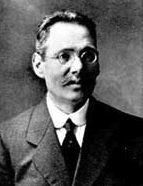

David Lopes was very interested in the history of the Portuguese in the lands and seas of the East and therefore prepared the edition of Chronica dos Reis de Bisnaga (1897) – a publication produced by the Geographical Society as a contribution to the 400th anniversary of the discovery of India. While researching the subject, David Lopes was able to consult a large number of books in English, given that India then belonged to the British Empire. He thus wrote a long introduction in which he recounted the history of the great territory of Vijayanagar (Bisnaga) and the struggles with the Muslims who had invaded India, as well as the relations between the Portuguese and the populations of the great inland kingdom, which also had some ports on the Malabar coast and a large territory on the Coromandel coast. The work includes two texts: the first, , is by Fernão Nunes, written around 1535, and the second is by Domingos Paes, dating from around 1525. David Lopes also read contemporary chroniclers and carried out lengthy research in the archives. He refers to the National Library of Lisbon, the Torre do Tombo (where he consulted the Corpo Chronologico, the Chancelleries of D. Manuel, D. João III and D. Sebastião) and the Gavetas and Documents sent from India. He visited the Municipal Library of Porto and the Public Library of Évora, with frustrating results. His heuristic care was accompanied by very rigorous transcriptions of the documents, using criteria that are still valid today. He states that he made “a few minor changes to the original: the first was to punctuate the text; the second was to undo the abbreviations; the third was to standardise the use of upper and lower case letters within the sentence, reserving the former for proper names (...) to separate words that are written together (...) we omitted, as unnecessary, the cedillas outside the normal conditions of current language, as well as replacing the u with v under the same conditions, we preserved the spelling of the time”.
This work is financed by national funds through FCT - Foundation for Science and Technology, I.P, in the scope of the projects UIDB/04311/2020 and UIDP/04311/2020.
